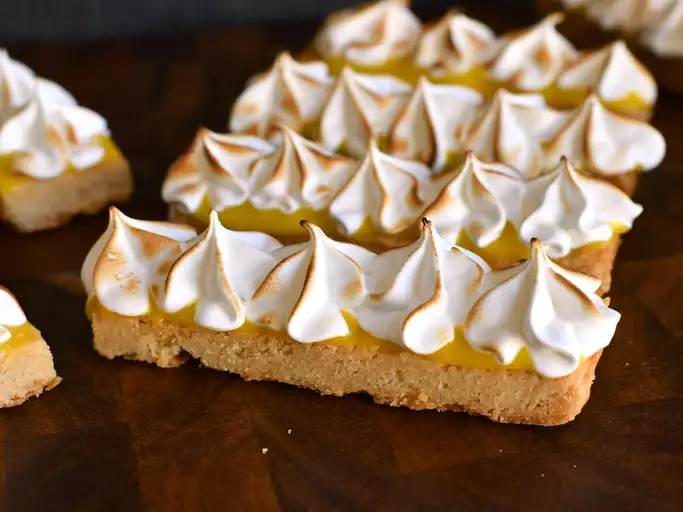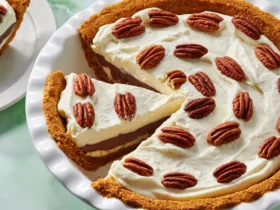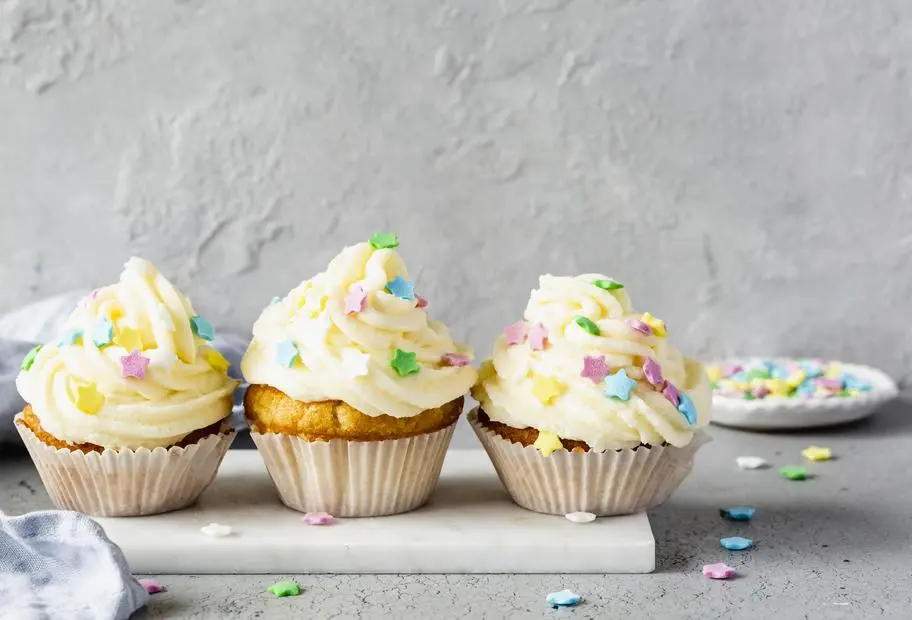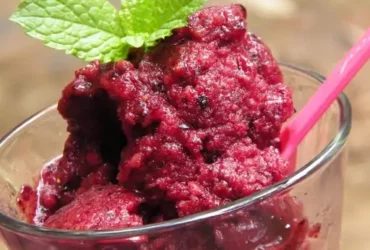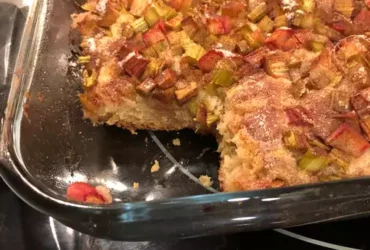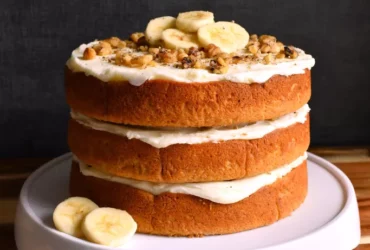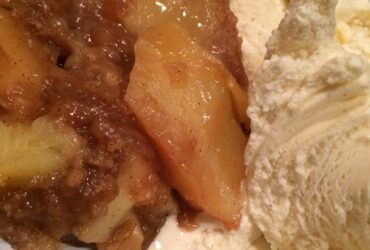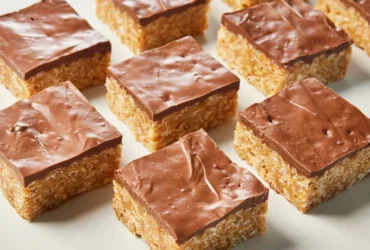Preparation
Gather Essential Ingredients
To prepare for making foolproof Swiss meringue, it’s essential to start with a clean and organized workspace. This will ensure that you can focus on each step without any distractions or accidents.
First, gather all the necessary ingredients and equipment in one place. You’ll need:
- Egg whites: Fresh and at room temperature (approximately 3-4 egg whites for a standard recipe)
- Granulated sugar: A high-quality sugar that dissolves easily, such as superfine or caster sugar
- Water: For whipping the meringue
- Cream of tartar: A stabilizer to help prevent weeping and create a smooth texture
- Salt: Optional, but recommended for balancing flavors (about 1/4 teaspoon)
- Flavorings or colors: Depending on your desired flavor profile or color scheme
In addition to the ingredients, you’ll need:
- A double boiler or a heatproof bowl set over simmering water
- A hand mixer or whisk attachment for an electric stand mixer
- A clean glass or stainless steel bowl for whipping the egg whites
- Piping bags and tips, if desired, for creating decorative shapes
Before you start mixing, make sure all your equipment is clean and free of any residual flavors or scents. This will prevent contamination and ensure that your meringue turns out perfectly.
3 large egg whites (at room temperature)
For a foolproof Swiss meringue recipe, it’s essential to start with room temperature egg whites.
The key to successful Swiss meringues is in the preparation of the egg whites, which should be at room temperature (around 75°F/24°C) before beginning the process. This ensures that the eggs are neither too cold nor too warm, allowing for optimal aeration and stabilization of the egg whites.
Separate three large egg whites from their yolks and place them in a clean, dry mixing bowl. It’s crucial to use room temperature egg whites, as cold eggs may not whip up properly or may take longer to come together.
To prepare your egg whites for whipping, make sure they are free of any fat or yolk residue, which can prevent the whites from forming stiff peaks. If you notice any visible bits of yolk in the egg white mixture, it’s better to start over than risk introducing unwanted flavors and textures into your meringue.
Now that you have your egg whites ready, proceed with the next step: incorporating the sugar. In a separate bowl or saucepan, combine 1/2 cup (115g) of granulated sugar and 1/4 teaspoon (1-2 grams) of cream of tartar.
1 cup granulated sugar
To prepare one cup of granulated sugar, you should first select a container that allows for accurate measurement and has a flat surface to prevent spilling. A dry measuring cup or a digital kitchen scale are ideal options for this task.
Next, gently scoop the sugar into the chosen container using a spoon or your fingers, making sure not to compact it too much as this can result in an inaccurate weight. If you’re using a digital scale, simply place the container on the scale and zero it out before adding the sugar.
If you prefer the dry measuring cup method, fill it with the required amount of sugar, scraping off any excess from the top with a straight edge or knife to ensure you have exactly one cup. For granulated sugar, this typically translates to a pile that reaches about halfway up the cup’s sides.
Once your cup is filled and accurately measured, inspect the sugar for any visible lumps or clumps. If necessary, use a fork to gently break them apart and redistribute the sugar evenly.
It’s also essential to note that granulated sugar can be sensitive to temperature and humidity, which may affect its volume. For this reason, it’s best to measure your ingredients at room temperature (around 68°F/20°C) just before using them in recipes like the Foolproof Swiss Meringue Recipe.
1/2 teaspoon salt
To ensure that your Foolproof Swiss Meringue turns out perfectly, it’s essential to prepare properly for this recipe.
First and foremost, make sure you have all the ingredients ready, including 1/2 teaspoon of salt. The quality of the salt used can affect the overall taste of the meringue, so choose a fine or flaky salt if possible.
Select a high-quality sugar that is free from impurities and will provide an excellent flavor to your meringue. It’s also crucial to note that some types of sugar, like superfine or caster sugar, are better suited for this recipe due to their finer texture.
Have your egg whites ready as well. Fresh eggs are a must-have in any baking recipe, including the Foolproof Swiss Meringue. Make sure they’re room temperature and not cold, as this can affect the meringue’s stability.
You’ll also need granulated sugar, cream of tartar, water, and your choice of flavorings or extracts to make your meringues unique. Don’t forget any equipment you may need, like a double boiler, hand mixer, or electric whisk.
Next, prepare the mixing bowls by washing them with warm soapy water. Rinse them well, then dry thoroughly before using them for mixing. It’s essential to ensure that your bowls are free from any residual flavors or moisture that could interfere with the meringue’s texture and taste.
Before you start making the meringues, also prepare a wire rack for cooling the finished meringues. A wire rack will allow air to circulate freely around each meringue, helping it dry evenly and preventing the formation of unsightly droplets or pools on top.
Lastly, familiarize yourself with your chosen mixing method – hand mixer or electric whisk. Understanding how these tools work will help you mix the egg whites and sugar effectively without introducing air pockets that could compromise the structure of your meringues.
This thorough preparation will guarantee a successful outcome when making your Foolproof Swiss Meringue Recipe, even if you’re new to this style of dessert-making or meringues in general.
1/2 cup water
To begin preparing for the Foolproof Swiss Meringue Recipe, it’s essential to understand that precision and accuracy are key when working with meringues.
For this recipe, you’ll need 1/2 cup of water.
Preparation Checklist
- Clean Work Area: A clean work area is crucial for food preparation. Clear your workspace, and make sure to have a bowl large enough to hold all the ingredients.
- Bowl and Whisk Attachment: Using an electric mixer with a whisk attachment will help incorporate air into the mixture, ensuring that it’s light and airy.
- Clean Whisk: Making sure your whisk is clean will prevent any unwanted flavors or textures in your meringues.
Preparing 1/2 Cup Water
To prepare 1/2 cup of water, you can use a measuring cup to accurately measure the amount.
- Pouring the Water: Pour 1/2 cup of cold water into your mixing bowl.
- Checking Temperature: Ensure that your water is at room temperature (around 72°F). If it’s too hot or too cold, it can affect the meringue mixture.
The preparation of 1/2 cup of water may seem simple, but accuracy and attention to detail are crucial in ensuring that your Swiss Meringues turn out perfectly.
Unsalted butter, softened to room temperature
- To begin preparing for the Foolproof Swiss Meringue Recipe, it’s essential to have high-quality ingredients and the right tools on hand.
- The first step involves unsalted butter, which plays a crucial role in achieving the perfect Swiss meringue texture and flavor.
- When selecting unsalted butter for this recipe, choose European-style or cultured butters as they offer a richer, more nuanced taste compared to regular American butter.
- Milk fat content is also an important consideration. For an authentic Swiss meringue flavor and structure, it’s recommended to use high-fat (around 83%) unsalted butter.
- Another critical aspect of preparation is ensuring the butter reaches room temperature before proceeding with the recipe.
- This softening process can be achieved by removing the butter from the refrigerator at least two hours in advance or leaving it on the counter for about an hour, allowing it to temper and soften gradually.
- Alternatively, you can also heat the butter slightly to expedite the softening process, but ensure not to melt it as this can compromise the meringue’s stability and texture.
- A general guideline is to aim for a temperature of around 72°F (22°C) for room temperature, at which point the butter should be pliable and almost pourable.
- It’s worth noting that using cold or even slightly melted butter can lead to an unstable meringue mixture and negatively impact the overall quality of your Swiss meringue.
Process of Whipping the Egg Whites and Sugar Mixture
Whisking the Egg Whites and Granulated Sugar
To whip the egg whites and sugar mixture, start by placing a heat-proof bowl over a pot of simmering water, creating a double boiler.
Pour 1 cup (200g) of granulated sugar into the bowl with the egg whites. The key to this process is ensuring that the sugar dissolves completely in the egg whites.
Whisk the egg whites and granulated sugar together using an electric mixer or a hand whisk until the mixture reaches room temperature, about 3-5 minutes.
The initial goal is to dissolve the sugar, creating a uniform mixture. This process involves constantly stirring the mixture while it’s over the simmering water to prevent the eggs from cooking.
Once the sugar has dissolved and the egg whites have reached room temperature, remove the bowl from the double boiler and place it back on your work surface.
Using an electric mixer or a hand whisk, beat the mixture at its highest speed. At this point, the egg whites and sugar are ready to be whipped into meringue.
Start whipping the mixture slowly, gradually increasing the speed as the mixture begins to thicken and form peaks. Be patient and keep whisks constantly moving the mixture while it’s being beaten until soft peaks form.
This stage is critical as it helps maintain control over the egg whites. Over-whipping at this point can cause the meringue to collapse.
Beat the egg whites until they become frothy
To whip the egg whites and sugar mixture for a foolproof Swiss meringue recipe, follow these steps with attention to detail:
First, ensure that your mixing bowl and whisk are completely clean and dry. Any fat or oil residue can prevent the egg whites from whipping properly.
In a medium-sized mixing bowl, combine 3 large egg whites and 1 cup (200g) of granulated sugar. The ratio of egg whites to sugar is crucial in Swiss meringue recipes, so make sure not to deviate from this proportion.
Using an electric mixer with a whisk attachment, beat the egg whites on low speed at first. This initial stage is called “breaking” the eggs, and it’s essential to break down any lumps or egg white fibers that might be present.
As you continue beating, increase the speed gradually. You’ll notice the mixture starting to froth and become slightly thickened, around 2-3 minutes into the process.
To check if the mixture has reached the “frothy” stage, stop the mixer and lift the beaters. The mixture should form soft peaks that will hold their shape for a few seconds before collapsing back into the bowl. This is an essential step in ensuring the meringue turns out light and airy.
Continue beating the egg whites until they become stiff and doubled in volume, about 5-7 minutes total from starting. The mixture should now have increased significantly in size and formed a thick, white foam with a texture similar to whipped cream but firmer and more dense.
Once you’ve reached this stage, your egg whites and sugar mixture are ready for adding flavorings or other ingredients as specified in the Swiss meringue recipe.
Add the granulated sugar gradually while continuously beating the mixture until it reaches stiff peaks
To whip the egg whites and sugar mixture, you’ll want to start by ensuring that your mixing bowl and whisk or beaters are clean and free of any fat residue, as this can prevent the eggs from whipping up properly.
Begin by beating the egg whites on medium-high speed until they become frothy, which should only take a minute or two. Be careful not to overbeat at this stage, as you’re just getting started with incorporating air into the mixture.
Next, slowly pour in the granulated sugar while continuously beating the mixture. It’s essential to add the sugar gradually to prevent the eggs from becoming too stiff too quickly, which can cause them to become grainy or even separate.
Continue beating the egg and sugar mixture until it becomes smooth and creamy. As you beat, you’ll start to notice a change in the texture of the mixture – it should begin to hold its shape slightly and develop a slight sheen to it.
This process typically takes around 5-7 minutes with an electric mixer or a bit longer if using a stand mixer or whisk by hand. The key is to be patient and gentle, as you’re coaxing air into the mixture rather than forcing it.
As the mixture continues to beat, the egg whites will start to increase in volume, and the sugar will dissolve more fully into the eggs. Keep an eye on the consistency of the mixture – you want it to become stiff peaks, but not so stiff that it becomes too firm or even separates.
The final stage of whipping is when the mixture reaches stiff peaks, which should be almost doubled in volume from its original state. At this point, stop beating immediately, as overbeating can cause the mixture to collapse and lose its structure.
Ensure that no sugar crystals are visible in the mixture, indicating proper dissolving
To whip the egg whites and sugar mixture to a smooth and silky consistency, it’s essential to follow a precise process that ensures no sugar crystals remain visible in the mixture, indicating proper dissolving.
Firstly, make sure the bowl is clean and free from any fat residues, as even a small amount of fat can cause the egg whites to not whip up properly. Place the bowl under cold running water for about 30 seconds to chill it before beginning.
Next, combine the granulated sugar and egg whites in the chilled bowl. Use an electric mixer or a stand mixer with a whisk attachment to beat the mixture on low speed. This helps to dissolve the sugar evenly into the egg whites without incorporating air too quickly.
Continue beating the mixture at low speed for about 2-3 minutes, stopping occasionally to scrape down the sides of the bowl with a rubber spatula. This is crucial to ensure that all the sugar crystals are dissolved and there’s no visible granulation remaining in the mixture.
You’ll start to notice the mixture thickening slightly as the sugar dissolves and the egg whites begin to foam. Be patient, as this process can take some time. If you’re using a stand mixer, increase the speed to medium-high after about 3-4 minutes of beating.
Keep an eye on the mixture’s consistency, and as soon as it reaches the desired smoothness, stop beating immediately. Overbeating can cause the mixture to turn into stiff peaks, making it difficult to incorporate air evenly during the meringue-making process.
At this stage, you should be able to see a uniform, smooth mixture with no visible sugar crystals. The mixture will have doubled in volume and will appear shiny, almost like melted white chocolate. This indicates that the sugar has dissolved properly into the egg whites, setting the stage for creating a beautiful Swiss meringue.
Finally, transfer the mixture to a piping bag fitted with a round tip, ready to be piped onto a baking sheet lined with parchment paper or a silicone mat. Proceed to pipe the desired shape and size of your meringues, taking care not to overfill the bag, as this can cause the mixture to collapse.
Cooking the Mixture and Cooling It Down
Cooking the Egg Whites and Sugar Mixture Over Water Bath
- The next step in our Swiss Meringue recipe is to cook the mixture and cool it down.
- Start by pouring the egg whites, granulated sugar, and water into a heatproof bowl over a pot of simmering water.
- Making sure that the bottom of the bowl isn’t touching the water, this will help prevent the eggs from scrambling and create a smooth and stable emulsion.
- Cook the mixture for about 5-7 minutes, or until the mixture reaches 160°F to 180°F (71°C to 82°C) on a candy thermometer.
- This process is called tempering the egg whites, and it helps to dissolve the sugar completely and prevents the formation of lumps.
- As you’re cooking the mixture, whisk constantly to ensure that everything cooks evenly and doesn’t stick to the bottom of the bowl.
- If using a thermometer, remove the bowl from the heat once it reaches the correct temperature.
- Be careful not to overcook the mixture, as this can cause it to turn into a fudge-like consistency.
- Once cooked, carefully lift the bowl off the water bath and transfer it to a wire rack or a cool surface to cool down to room temperature.
- Now that we’ve cooled our Swiss meringue mixture, let’s move on to cooking the egg whites and sugar mixture in an instant read thermometer for even heating and to prevent scorching.
- This step is crucial in creating a stable foam and preventing it from collapsing.
- Cook the egg whites and sugar mixture over a water bath, using an Instant Pot or other similar device, at 190°F (88°C) for about 5 minutes or until the meringue is double its original volume.
- This process should take around 10-12 minutes total cooking time, depending on your device and desired consistency of the meringue.
- Keep in mind that overcooking can result in a dense and weepier meringue.
- Whisk constantly during this process to ensure even heating and prevent lumps from forming.
- A successful meringue should be silky smooth, stiff and hold its shape when spooned onto the baking sheet.
Combine the egg whites and sugar mixture in a heatproof bowl
Cooking the Mixture:
- Next, cook the egg whites and sugar mixture over a double boiler or in a heatproof bowl set over a saucepan of simmering water.
- Make sure that the bowl is not touching the water to prevent the eggs from cooking too quickly and scrambling.
- Whisk constantly until the mixture reaches 160°F to 180°F (71°C to 82°C), which should take about 5 to 7 minutes. This is crucial for creating stable egg whites that will hold their shape.
Cooling It Down:
- Once the mixture has reached the correct temperature, remove it from the heat and let it cool slightly, but not completely.
- Continue whisking until the mixture cools to room temperature or reaches a temperature of 80°F to 90°F (27°C to 32°C).
- This cooling process is essential for stopping the cooking process and preventing the egg whites from scrambling. If you fail to cool the mixture down properly, it may collapse or become too firm.
Combine:
- Now that the cooked egg white mixture has cooled down, it’s time to combine it with the sugar syrup in a separate heatproof bowl.
- To do this, slowly pour the room temperature egg white mixture into the bowl containing the sugar syrup while continuously whisking until fully incorporated.
- Making sure to maintain a steady flow and keep whisking will help prevent lumps from forming in the meringue.
Place the bowl over a pot of simmering water, making sure that the bottom of the bowl doesn’t touch the water
- To cook the mixture and cool it down, place a heatproof bowl over a pot of simmering water.
- Making sure that the bottom of the bowl doesn’t touch the water is crucial to prevent the meringue from scrambling or cooking unevenly.
Step 1: Heating the Mixture
- Place the bowl with the mixture over the pot of simmering water and ensure that it is centered, allowing for even heat distribution.
- Carefully monitor the temperature of the mixture using a thermometer; it should reach 160°F (71°C) to 180°F (82°C), which is ideal for meringue cooking.
Step 2: Stirring the Mixture
- Using a rubber spatula, gently stir the mixture in a figure-eight pattern to prevent hot spots and ensure even cooking.
- Cooking time will vary depending on the size of your bowl and the power of your stovetop; typically, it takes around 10-15 minutes for the mixture to reach the desired temperature.
Step 3: Cooling Down
- Once the mixture reaches the correct temperature, carefully remove the bowl from the heat source and place it on a wire rack or a cold surface to cool down quickly.
- Cooling the meringue mixture rapidly will help prevent it from weeping or becoming too runny; you can even place the bowl in an ice bath if needed.
Important Safety Precautions
When working with hot mixtures and stovetops, always keep a fire extinguisher nearby and ensure good ventilation to avoid inhaling fumes.
Be cautious when handling hot equipment and wear oven mitts or gloves if necessary to protect your hands from burns.
Tips for Achieving Success
- Cooking the mixture at the right temperature is crucial for achieving stability and structure in the meringue.
- Gentle stirring and even heat distribution are key factors in preventing hot spots and ensuring a smooth, stable meringue.
- Cooling down quickly will help prevent weeping or runniness; aim to cool the mixture within 10-15 minutes of removing it from the heat source.
Final Check
Carefully inspect your meringue mixture for any signs of overcooking, such as a grainy texture or an unpleasant odor.
If all goes well, you should now have a smooth, stable, and perfectly cooked Swiss meringue that’s ready to be whipped into a fluffy delight!
Whisk the mixture continuously until it thickens, usually between 6 to 10 minutes
Once you have successfully prepared the egg yolk and sugar mixture, it’s time to cook it down with a double boiler or a heat-proof bowl set over a pot of simmering water.
The goal at this stage is to gently warm up the mixture while constantly whisking it until it thickens and doubles in volume.
This process can take anywhere between 6 to 10 minutes, depending on your cooking technique and the temperature of the mixture.
As you continue whisking the mixture, you may start to notice a slight change in texture and consistency – it will begin to thicken and turn into a smooth, creamy paste.
This is an indication that the mixture has reached its ideal state, where it’s no longer too runny but still retains a silky smoothness that’s characteristic of Swiss meringue.
During this time, make sure to maintain a steady pace while whisking – don’t overheat or underheat the mixture, as this can affect the final texture and stability of your meringue.
To ensure even heating, it’s essential to constantly scrape down the sides of the bowl with a rubber spatula, incorporating any bits that may have formed and sticking them back into the mixture.
By doing so, you’ll be able to maintain an evenly mixed consistency throughout the cooking process, which will ultimately result in a perfectly stable meringue that can withstand high temperatures without collapsing or melting.
Keep whisking until the mixture has thickened significantly and doubled in volume – at this point, it should have transformed into a smooth, airy, and silky paste with an almost double the original volume of your egg yolk mixture.
Remove the bowl from the heat source when the mixture reaches 160°F (71°C) and has doubled in volume
To ensure that the meringue mixture is cooked to a safe temperature and has doubled in volume, carefully monitor its progress as it cooks.
Remove the bowl from the heat source when the mixture reaches 160°F (71°C), which typically takes about 10-15 minutes over low heat or using a double boiler.
This temperature is crucial to kill any bacteria that may be present in the egg whites, making the meringue safe for consumption.
Check the volume of the mixture frequently as it cooks, and remove it from the heat source when you notice it has doubled in size. This should happen quite quickly once the mixture reaches the desired temperature.
You can also check for doneness by lifting some of the meringue with a spatula; if it holds its shape and doesn’t collapse back into the bowl, it’s ready.
Once you’ve removed the bowl from the heat source, allow the mixture to cool slightly before using a hand mixer or whisk to whip it until it becomes stiff and doubled in volume.
This is an important step: cooling the meringue will help prevent it from becoming too soft or weeping excess liquid when whipped. However, don’t let it cool completely, as this can cause the mixture to collapse when whipped.
Here are the key takeaways:
- Temperature: Remove the bowl from the heat source at 160°F (71°C).
- Volume: Wait until the meringue has doubled in size.
- Cooling: Let the mixture cool slightly before whipping it into stiff peaks.
- Best Datanyze Alternatives for 2025 - April 24, 2025
- Best Hunter.io Alternatives for 2025 - April 22, 2025
- Best Lead411 Alternatives for 2025 - April 22, 2025

